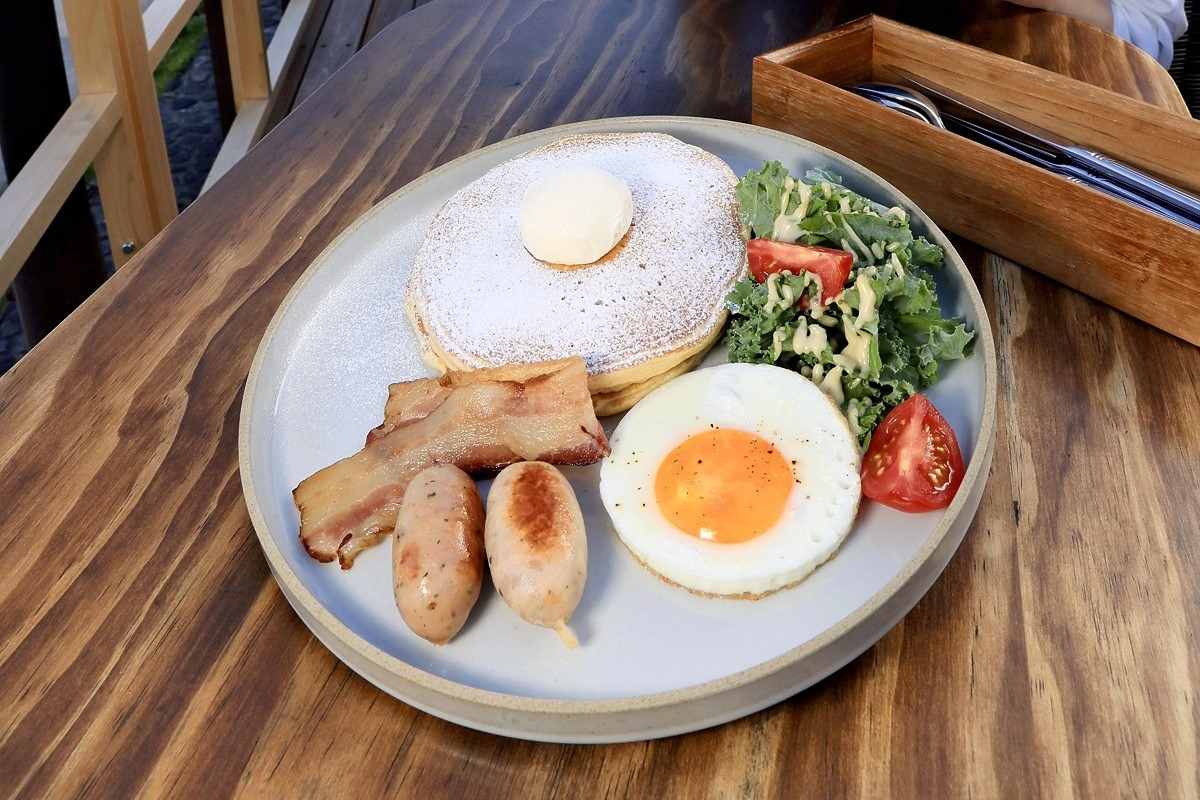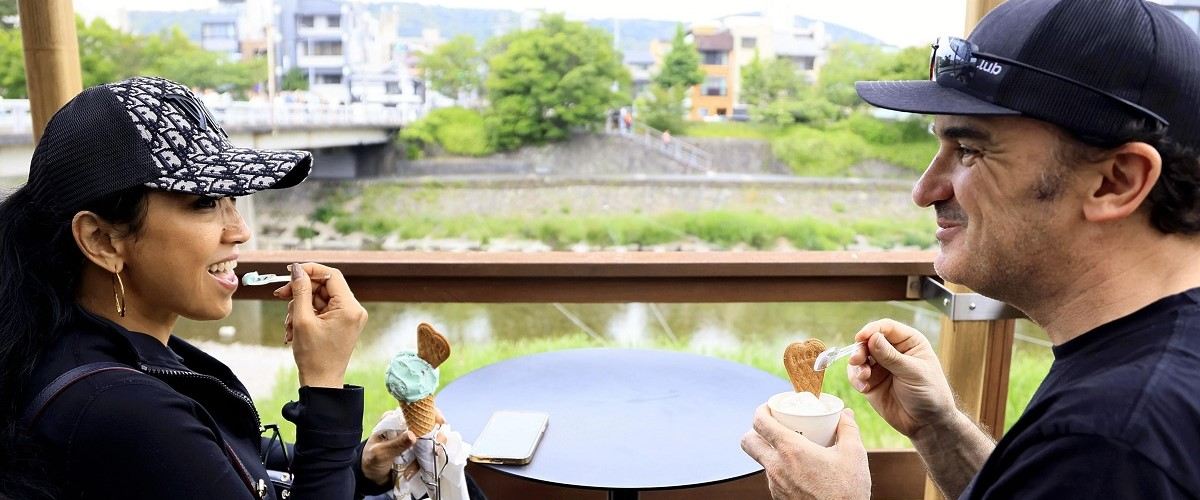
A breakfast dish served at a riverside terrace restaurant in Kyoto’s Shimogyo district.
13:27 JST, July 8, 2024
KYOTO — While Japan’s former capital boasts numerous tourist attractions, Noryo Yuka, a summer terrace along the Kamo River, is one of the most classic symbols of the season.
The riverbank area stretches for about two kilometers along the Kamo River from the Nijo Ohashi Bridge to the Gojo Ohashi Bridge and once served as balconies for ryotei Japanese restaurants and ryokan inns. But recently, several shops have breathed new life into the area, along with an increase in incoming visitors. The shops serve everything from gelato to breakfast, and attract many tourists who come to experience the traditional culture.
Staying cool above the riverbank
“The breeze along the Kamo River is pleasant and the green view from here is beautiful. This is a great place to get a taste of Kyoto,” said Matt Nichols, 47, a tourist from Singapore, who was eating gelato on the balcony in late May.
Babbi Gelateria Kyoto has seen an influx of international customers since last year, when the COVID-19 pandemic subsided, with half of its customers so far this year being foreign tourists.
“Our Uji green tea flavor is popular,” said Mari Shibuya, the 41-year-old store manager. “I think incoming visitors are also attracted by the unique experience of staying cool above the riverbank.”
The origins of Noryo Yuka date back to the Azuchi-Momoyama period (1568-1600). In the Edo period (1603-1867), there were said to be around 400 teahouses clustered above the riverbank. The area was closed during World War II, but reopened in 1951.
About 60 years ago, geisha and maiko entertained guests as they dined on Kyoto cuisine at Noryo Yuka, part of posh ryokan inns and ryotei restaurants. But eateries such as cafés and French bistros have sprung up like mushrooms in the past 20 years.
According to the Kyoto Kamogawa Noryo Yuka Association, there are 90 outdoor seating establishments open from May to September this year in four riverside areas including Pontocho and Shimo-Kiyamachi.
Nowadays, more and more restaurants have set up tables and chairs where foreign visitors can sit comfortably, instead of the traditional seating method where customers sit cross-legged or seiza-style at low tables.

Tourists enjoy gelato at a riverside terrace in Kyoto’s Shimogyo district.
Shops are open during the day
Restaurants with riverside terraces used to be open only in the evenings. However, the COVID-19 pandemic caused a drop in the number of tourists, so in 2021 the association decided to open during the day as well.
Kacto, which opened in February last year, serves pancakes and burgers and is open from 8am.
International tourists who visit Kyoto early in the morning to avoid the daytime crowds often come to the shop. The 30 seats on the dining terrace are sometimes full even on weekdays.
The restaurant’s employees have undergone English training to help serve customers. “Customers love spending a luxurious morning relaxing by the Kamo River,” said Yui Miyamoto, a public relations officer.
According to the Kyoto City Tourism Association, inbound tourists made up 70.1% of total visitors in April, a record high since the survey began in 2014. Many come from the United States, China and Australia.
There is a guideline based on Kyoto’s Kamo River Ordinance to ensure that the diversification of restaurants does not disrupt the cohesion of the dining terraces. Many details are laid down in the guideline: floors and railings must be made of wood, signs are prohibited, light bulbs must be warm colors, and the difference in floor level between adjacent shops must not exceed 50 centimeters.
“Noryo Yuka doesn’t just mean riverside terraces. It shows off Kyoto’s 400-year-old cultural history,” said Hiroshi Tanaka, 68, the association’s director. “Since foreign tourists pay attention to the terraces, we are committed to preserving Kyoto’s unique elegance.”



